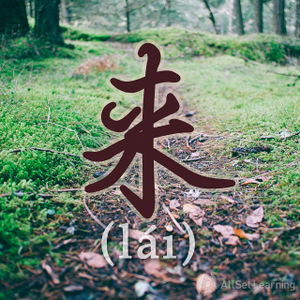Advanced uses of direction complement "-qilai"
-
Level
-
Similar to
-
Used for
-
Keywords
We saw in B1 that 起来 (qǐlái), among other things, can be used to express a literal upward movement. 起来 also has some more slightly less intuitive usages, listed below.
Contents
Expressing bringing things together
Structure
起来 can be used to express collecting things together, where in English we might say "tidy up", or "add up".
Verb / Adj. + 起来
Examples
- 他 把 衣服 都 收 起来 了。He put away his clothes.
- 13 和 15 加 起来是 多少?How much is 13 and 15 added up?
- 我 老婆 把 我 的 钱 都 存 起来了。My wife saves up all my money.
- 宝宝, 把 你 的 玩具 都 收 起来。Darling, put your toys away.
- 你 为什么 要 把 我 的 内衣 藏 起来? Why would you hide my underwear?
Structure
起来 can also be used to express more abstract concepts of bringing things together.
Examples
- 一个 优秀 的 领袖 会 让 他 的 人民 团结 起来。An outstanding leader can make his people come together.
- 要 想 让 这 次 活动 成功, 就 一定 要 把 所有 人 都 组织 起来? If we want this event to succeed, we must organize all the people.
Expressing initiation of an action
Structure
起来 can also be used to show that an action or state has started and is ongoing:
Verb / Adj. + 起来 +了
Examples
- 大家 笑 起来 了。Everyone started laughing.
- 宝宝 哭 起来 了。The baby started crying.
- 两 个 大妈 吵 起来 了。Two middle-aged ladies started arguing.
- 天气 热 起来 了。It's starting to get hot.
- 他 的 病 好 起来了。His illness is starting to get better.
When used like this, 起来 is only used with spontaneous actions, like 唱, 跳, 聊, or with states like 热, 冷, or 好 etc. It cannot be used with planned actions.
- 我们 做饭 起来 吧。
- 我们 开始 做饭 吧。
See also
- Result complement "-qilai"
- Figurative directional complements 下去 and 出来
- Direction complement
- Result complements "dao" and "jian"
- Appearance with "kanqilai"
Sources and further reading
Books
- Boya Chinese Elementary Starter 2 (博雅汉语初经起步篇) (pp. 80) →buy
- Chinese Grammar - Broken down into 100 items - Basic and Intermediate Levels (汉语语法百项讲练 - 初中级) (pp. 25-31) →buy
- Integrated Chinese: Level 1, Part 2 (3rd ed) (pp. 141-2) →buy
- Integrated Chinese: Level 2, Part 1 (pp. 342-3) →buy
- Integrated Chinese: Level 2, Part 2 (pp. 20) →buy
- New Practical Chinese Reader 3 (新实用汉语课本3) (pp. 169) →buy
- New Practical Chinese Reader 5 (新实用汉语课本5) (pp. 134-5) →buy



